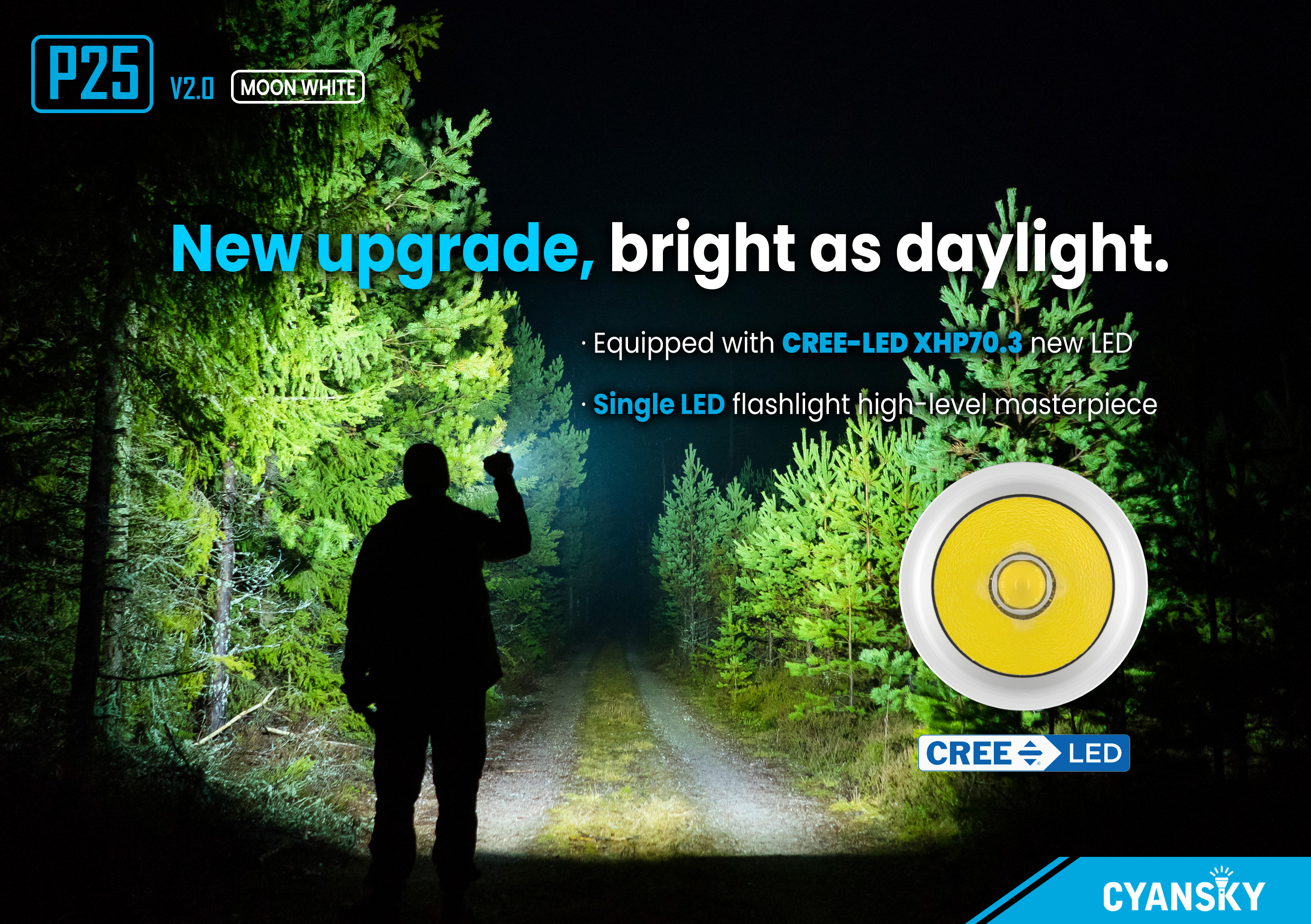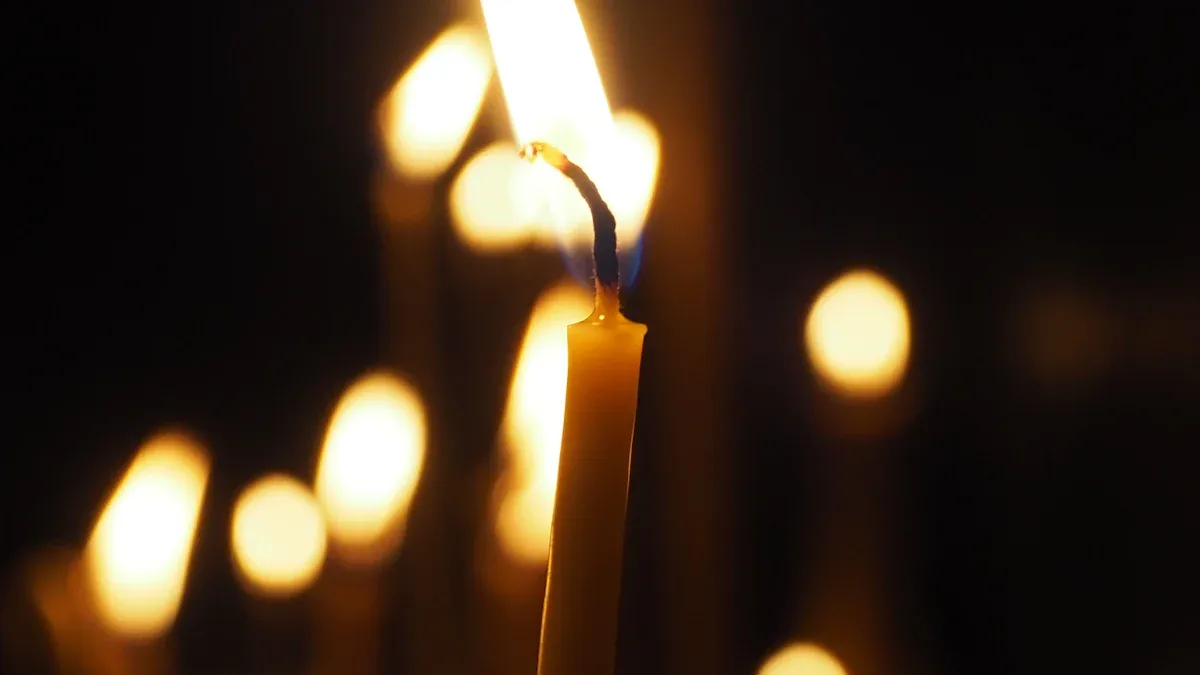Flashlights vs. Candles: Safer Lighting Solutions During Power Outages

When the power goes out, safer lighting is very important. Flashlights are a dependable choice. They don’t cause fires and are easy to use. Candles may seem common and old-fashioned but are risky. Flames from candles can cause accidents, so flashlights are a safer lighting option and more useful.
Key Takeaways
Flashlights are better than candles during power outages. They don’t use fire, so they are less risky for fires or accidents.
Always store extra batteries for your flashlight. This makes sure it works when you need it during long blackouts.
Pick LED flashlights for emergencies. They save energy, last longer, and give bright light without using flames.
Safety Considerations for Safer Lighting

Fire Hazards of Candles
Candles might seem handy during power outages, but they are risky. A single flame left alone can quickly cause a fire. The U.S. Consumer Product Safety Commission says 85% of candle fires can be avoided by following three simple rules:
Always stay near a burning candle.
Keep candles away from things that can catch fire.
Place candles where kids and pets can’t reach them.
In 1999, candles caused about 12,800 house fires. These fires led to 1,530 injuries, 100 deaths, and $265 million in damages. From 2009 to 2013, candles caused an average of 9,300 home fires each year. Bedrooms were the starting point for 36% of these fires. Falling asleep with a candle burning caused 11% of fires and 30% of deaths.
To stay safer, use candle lanterns or emergency soy candles. Soy candles burn cleaner and last longer. Always follow safety tips like using sturdy holders and keeping candles 12 inches away from anything flammable.
Risks of Burns and Accidents
Burns are another big danger when using candles for light. Handling lit candles in the dark can cause accidents. Kids and pets are especially at risk. Between 2009 and 2013, candle fires caused 827 injuries each year. Almost half of these injuries happened in bedrooms.
Accidents happen when candles are on wobbly surfaces or get knocked over. Flames can catch nearby items on fire, creating danger. To avoid this, use candles in safe areas away from busy spots. Emergency soy candles are better because they make less soot and burn cooler.
Safety Features of Flashlights
Flashlights are a much safer choice during power outages. They don’t have flames, so there’s no fire risk. Modern flashlights use LED lights, which are bright and last a long time. They also don’t get hot. Many flashlights meet safety standards like ANSI/PLATO FL1, proving they work well in emergencies.
Some flashlights are made for dangerous places and won’t ignite flammable materials. Others are built for special jobs, like search and rescue, with strong beams for seeing far away. These features make flashlights a must-have for emergencies.
Always keep extra batteries so your flashlight works when needed. Flashlights are easy to carry, reusable, and safe, making them the best choice for emergency lighting.
Practicality During a Power Outage
Easy to Use in Emergencies
When the power goes out, you need quick and reliable light. Flashlights are great for this. They work with just one button press. Many flashlights have extra features like strobe lights or SOS signals. These can help in emergencies. Flashlights are bright, measured in lumens, and light up dark spaces well. They last a long time and are tough, making them useful for long outages. Candles need careful handling and watching, but flashlights are simple and safe.
Easy to Carry and Store
Flashlights are made to be portable. Small ones fit in pockets or kits. They are lightweight and easy to grab during emergencies. Bigger flashlights are less portable but shine brighter and last longer. Many flashlights resist water and bad weather, so they work in tough conditions. Candles take up more space and need holders and matches. Flashlights don’t need extras, making them better for emergencies.
Safe Candle Use in Emergencies
If you use candles, be very careful. Put them on sturdy surfaces in strong holders. Keep them away from curtains, clothes, or anything that burns easily. Never leave candles alone, especially in busy areas. Blow them out before leaving or sleeping. Candles give light but can be dangerous because of open flames. Flashlights or glowsticks are safer and don’t have fire risks. Using candles carefully lowers danger, but flashlights are still the smarter choice.
Reliability in Emergency Situations

Performance in Long Power Outages
During long power outages, you need safe, lasting light. Flashlights work better than candles for this. They give steady light and don’t have fire risks. Battery-powered and solar-powered flashlights last longer and are more dependable than candles.
Using candles for long outages can be dangerous. Open flames can cause accidents, especially with kids or pets around. Flashlights remove these risks. Adding a flashlight to your emergency kit gives you a safe and reliable light source, lowering the chance of injuries or damage.
Functionality in Extreme Weather
Storms like hurricanes or earthquakes often bring bad weather. Flashlights are great in these conditions. Many are water-resistant or waterproof, so they work in rain or floods. They are tough and stay useful when you need them most.
Candles don’t work well in bad weather. Wind can blow them out, and rain makes them useless. Flashlights, especially battery-powered ones, don’t have these problems. They are easy to carry and strong, making them the best choice during disasters.
Dependence on Batteries vs. Open Flames
Flashlights need batteries to work. Modern LED flashlights use less power, so batteries last longer. Here’s a simple comparison of flashlight types:
Flashlight Type | Power Use | Battery Life | Bulb Lifespan |
|---|---|---|---|
LED Flashlights | Low power | Long battery life | Long-lasting |
Incandescent Flashlights | High power | Short battery life | Short lifespan |
Battery-powered flashlights are safer and better than candles. Candles don’t need batteries, but their flames make them risky and less useful in emergencies. Flashlights give safe, controlled light, helping you stay ready for anything.
Tip: Always keep extra batteries in your emergency kit. This ensures your flashlight works during long power outages.
Cost and Maintenance of Lighting Options
Upfront Costs of Flashlights and Candles
Flashlights usually cost more at first. A good LED flashlight can be $10 to $50. Rechargeable ones cost extra but save on batteries. Candles are cheaper. A pack of emergency candles costs under $10. They are a budget-friendly choice for short-term use.
But during long power outages, candles can get expensive. You’ll need many candles to light one room. They also burn out fast. Flashlights cost more upfront but last longer and are more efficient.
Long-Term Maintenance and Replacement
Flashlights are easy to maintain. You just replace or recharge batteries. LED bulbs last thousands of hours, so you rarely replace them. Candles, however, need constant restocking. Each candle burns out quickly, so you need extras for emergencies.
Candles also leave soot and wax behind, which can damage surfaces. Flashlights don’t have these problems. They are cleaner and easier to use.
Energy Efficiency and Sustainability
Flashlights, especially LED models, use very little energy. Many have rechargeable batteries, which reduce waste. Solar-powered flashlights are even better since they use renewable energy.
Candles seem eco-friendly but aren’t always. Many are made from paraffin, which releases harmful chemicals when burned. Soy or beeswax candles are safer but still create waste and need frequent replacing. Flashlights, with reusable parts, are a greener option.
Tip: Choose rechargeable or solar-powered flashlights to save money and help the environment.
Flashlights are a safer choice during emergencies. They don’t cause fires, work reliably, and need little upkeep. Candles might seem easy to use, but they are risky. Flashlights are better because they are safe and practical. Keeping flashlights in your emergency kit helps you stay ready for anything.
FAQ
1. What flashlight works best for emergencies?
Pick an LED flashlight with rechargeable batteries. It lasts longer, saves energy, and gives bright, steady light during blackouts.
2. Are candles safe to use when the power is out?
Candles can be risky. Use them carefully in strong holders, far from things that burn, and never leave them alone. Flashlights are a much safer choice.
3. How should you get ready for long power outages?
Have flashlights, spare batteries, and solar-powered lights in your kit. Don’t depend on candles because they can cause fires and don’t last long.
See Also
Explore Camping Essentials: Comparing Lanterns And Flashlights
A Homeowner's Guide To Selecting The Ideal Emergency Flashlight
Comparing Police Flashlights And Regular Ones: Which Is Superior?
